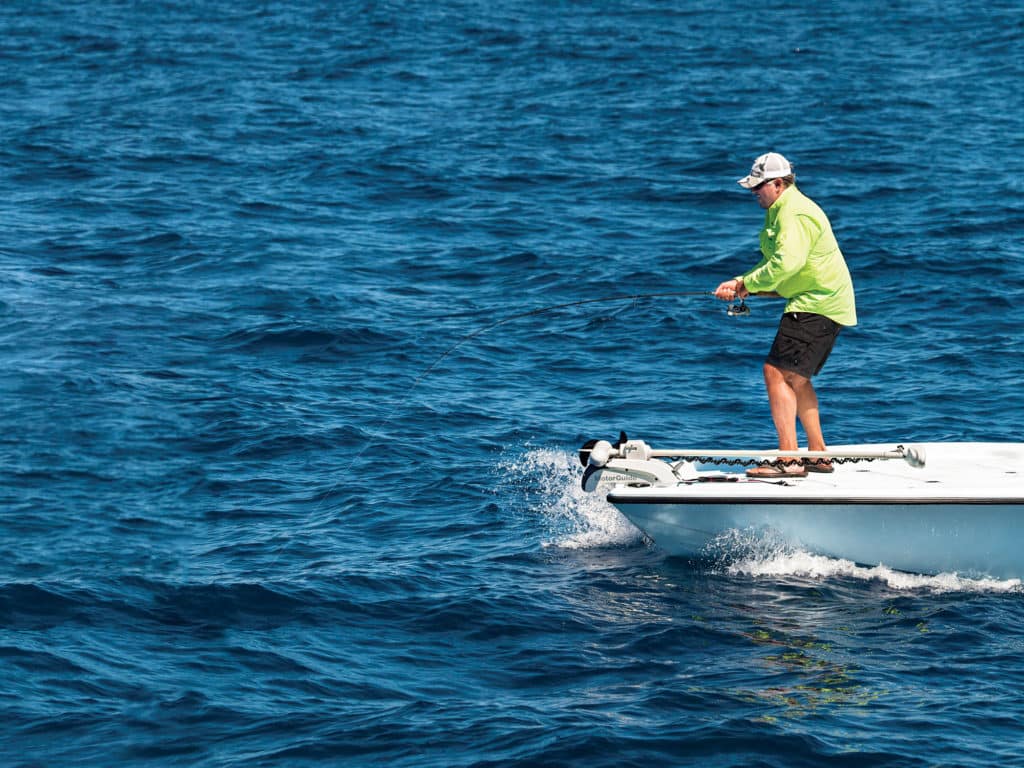
“The best time to go fishing is when you can get away” often means we’re unable to high-grade the time we choose to be on the water. Such was the case this past fall when the SWS staff convened at Cheeca Lodge in Islamorada, in the heart of the Florida Keys, for a round of meetings and a couple of days of fishing. Our timing was distinctly off-season, too late for summer dolphin and too early for the sailfish bite usually triggered by the arrival of cold fronts. But you go when you can, and in the Keys, “slow fishing” remains a relative concept.
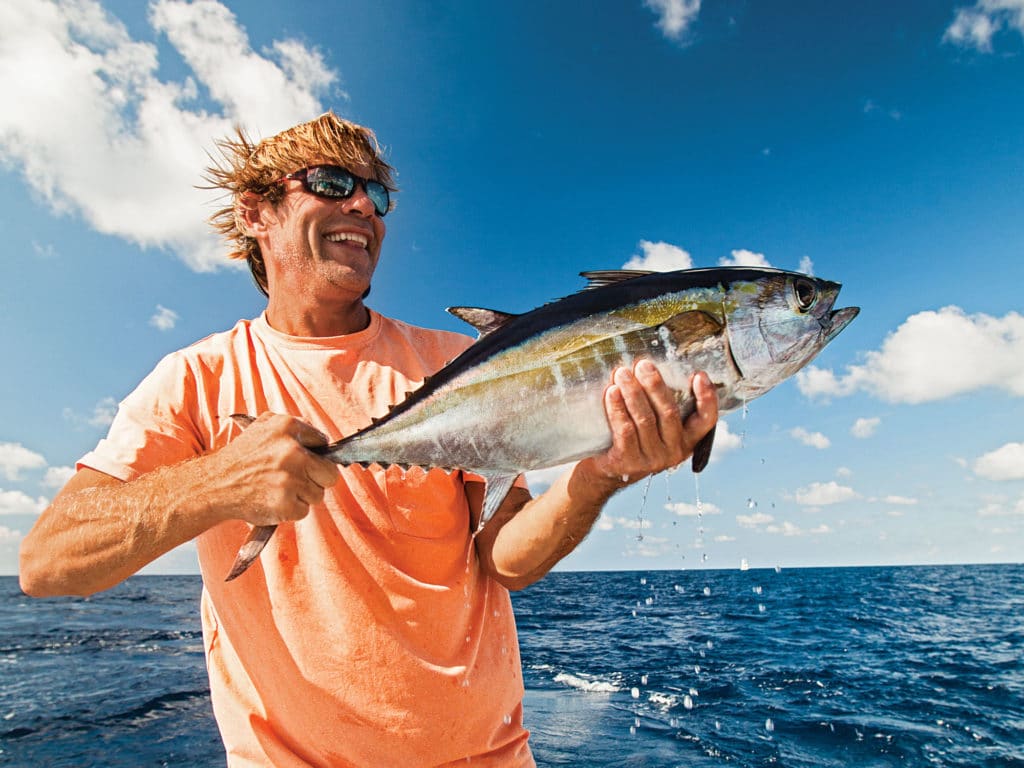
Hump Day
Work completed, we met at Bud N’ Mary’s Marina, home port of Gimme Jimmy, a 39-foot SeaVee owned by Jimmy Boone and captained by Dave Jones. Boone and Melissa Stevens took the ’pit and Jones the helm as we headed to Alligator Light and its surrounding patch reefs in 25 feet of water to make bait. Pilchards, the top choice, proved scarce, but a couple of textbook throws of the cast net by Jones filled our livewell with a suitable replacement — cigar minnows — and off we went to the 409 Hump. Sitting in 600 feet of water at 24 35.853′ N/80 35.459′ W, rising to a not-surprising 409 feet, the submerged pinnacle pushes water and bait toward the surface, creating a lunch counter for predators. Along with the nearby Islamorada and Marathon humps, the 409 provides reliable action on an array of species — from billfish to bottomfish — and successful tactics run the gamut from trolling to kite-fishing and deep-dropping.
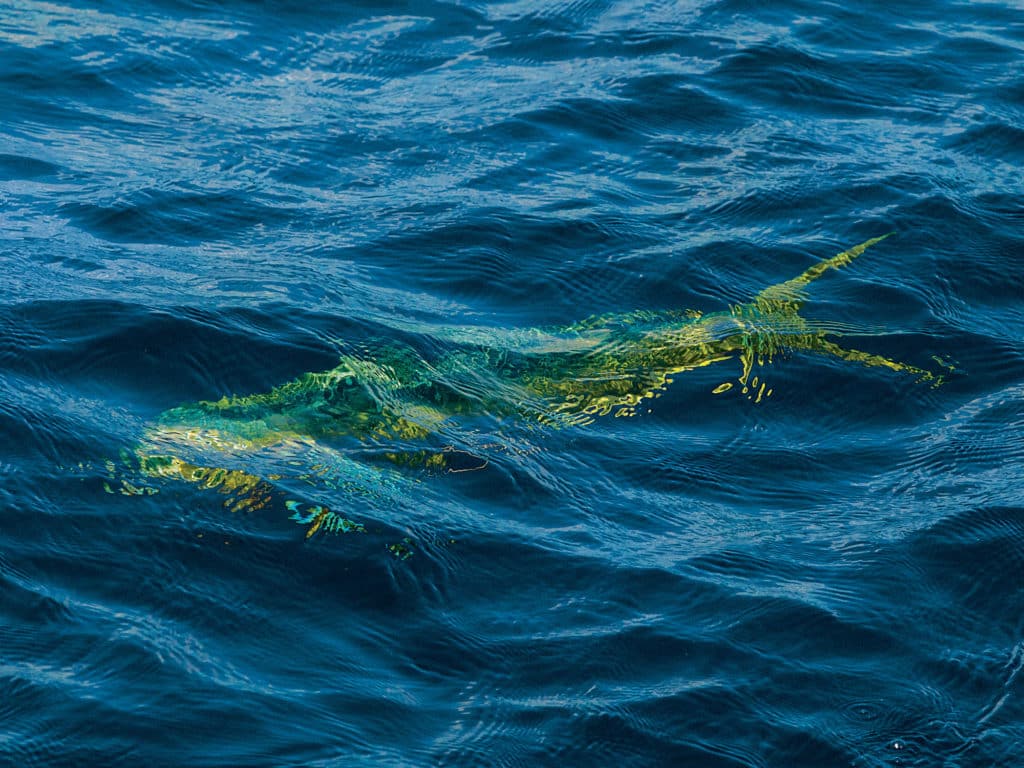
Sneak Attack
We’d come to the hump for blackfin tuna and hoped to run into a sailfish or maybe a few dolphin. The strategy was to motor up-current of the image on the sounder and drift, parallel with the other boats fishing, free-lining cigar minnows on spinning gear loaded with 30-pound braid and 30-pound fluoro leaders. Staffers Keilani Rodriguez and Megan Williams went to work getting some saltwater experience under their belts.
We’d boxed a half-dozen blackfin to 15 pounds when our second boat, a 24-foot Yellowfin carrying Scott Salyers, Mark MacKenzie and Alex Suescun, radioed that they were hooked up to a sailfish. So we motored over to watch the action as Suescun worked the sail off the bow and soon had it alongside for photos and a release, no small feat considering the outfit he’d hooked it on was better suited to redfish than billfish.
Just as we had been, the trio aboard the bay boat was free-lining cigar minnows on light tackle along the edge of the 409. They’d decided to make a move because action had slowed, and as Suescun reeled in his bait, a shadow appeared behind it. He opened the bail, and the shadow turned into a sailfish that inhaled the cigar minnow, nearly at his feet, and the fight was on.
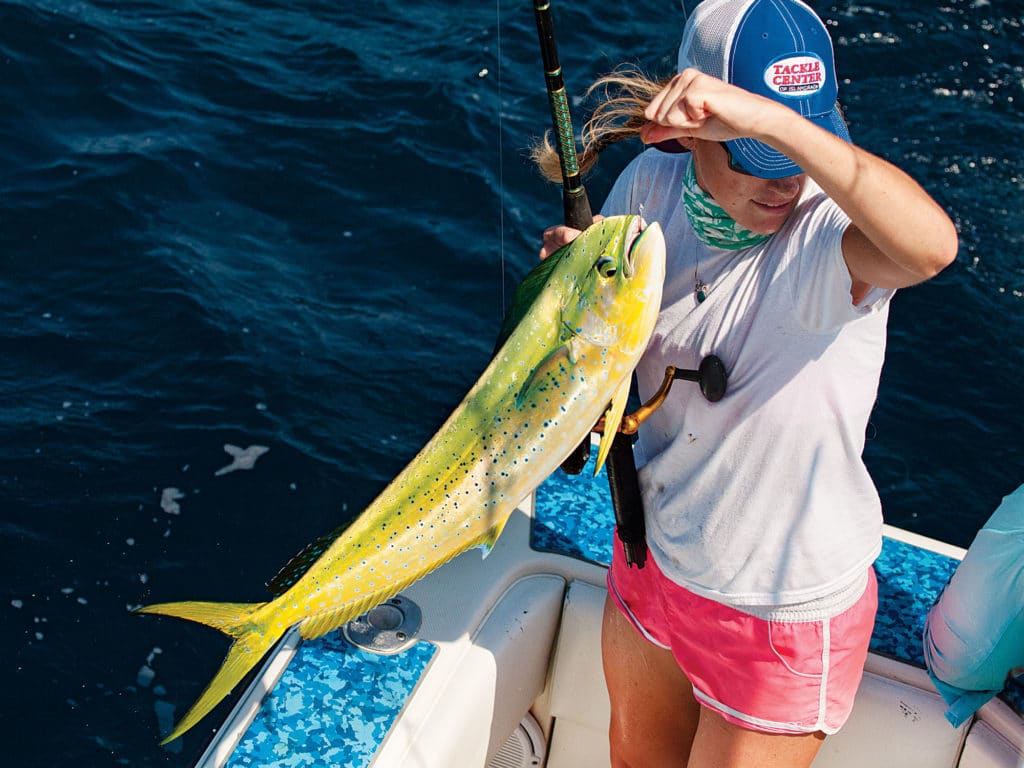
Fitting End
With blackfin on ice and a sail to our credit, we battened down for the 17-mile run back to the dock. But as we crossed the reef, Jones pulled back the throttles. From the tower, he’d spotted dolphin. We eased in under the frigate birds shadowing the fish and cast baits as Jones called out the targets. Hookups quickly followed, and we’d soon boxed enough schoolies to round our dinner menu and top off a substantial day offshore.
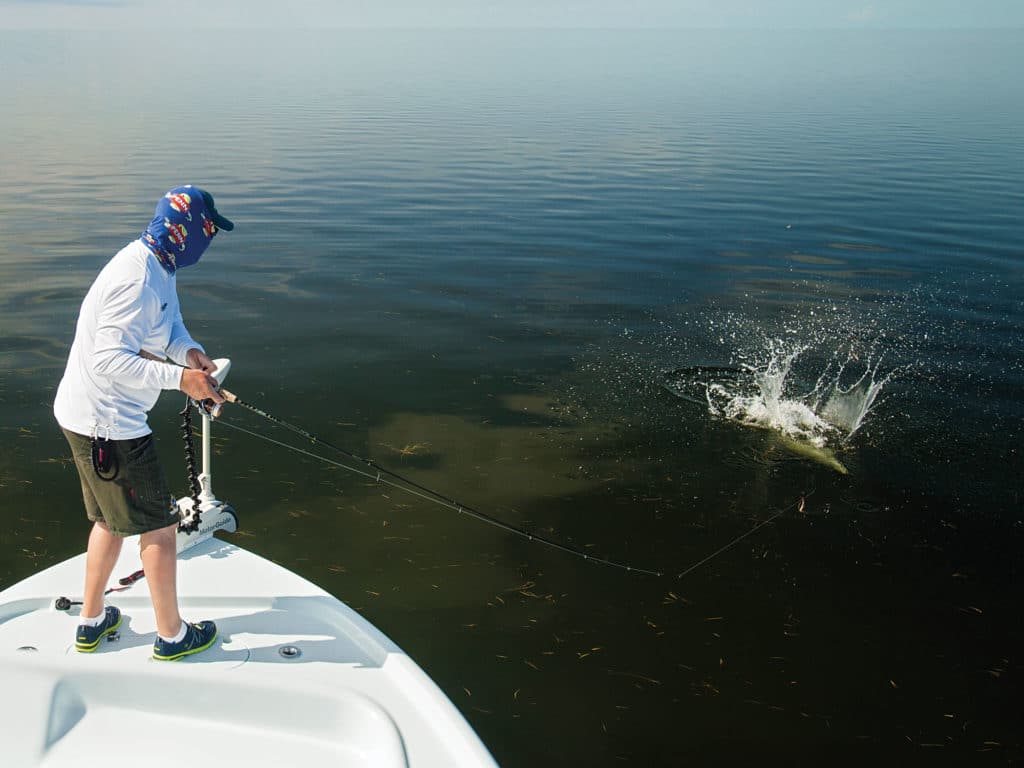
Flats Hunt
Our second morning found us motoring to the far reaches of Florida Bay, through Twin Keys and Rabbit Key Basin to Man o’ War Key, where the backcountry meets the Gulf of Mexico. Our plan called for shark fishing in the morning, then sight-fishing redfish on the tide change.
First order of business was gathering shark bait, which in the Keys means barracuda. It took some searching, but the moat around Man o’ War, slightly deeper water against the shoreline, held plenty of ’cudas on the incoming tide. Casting tube lures and retrieving at top speed, we soon waylaid a 2-footer and brought him aboard. Through the mangroves, we heard the anglers on our companion boat whooping it up from the far side of the key, so we knew they were hooking up as well.
Tides in the backcountry seem to have minds of their own, and we scouted awhile for the right combination of clear water and a strong enough tide to carry a scent line across the flats. After a couple of false starts, we ended up back where we started, adjacent to Man o’ War.
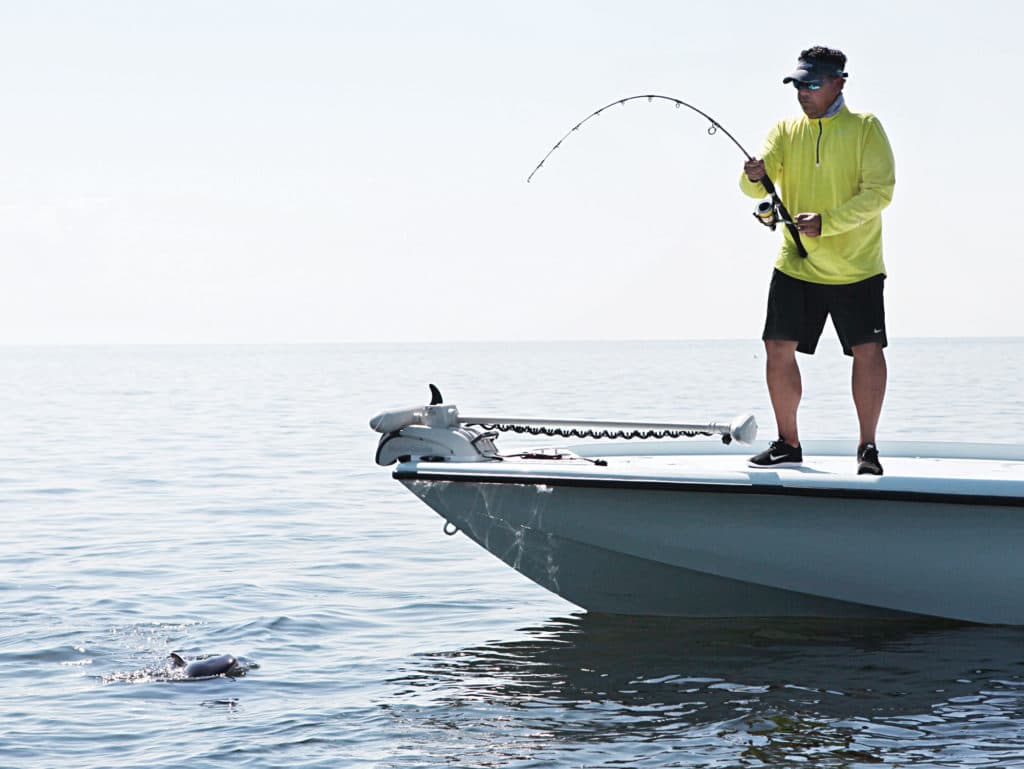
Dinner Bell
We took fillets off the ’cuda for bait, then strung the carcass, along with a couple of dolphin and blackfin remains from the previous day, on a short loop of cable clipped to a trap float and cleated it off with a short line to hang in the current. In short order, we had a visitor, then another and another. In the clear, shallow water, we watched blacktips and lemon sharks circling in and out of the chum line, interested but wary; coming a little closer with each pass to the slab of bait that Keilani Rodriguez, our designated angler, held just off the bottom in the current.
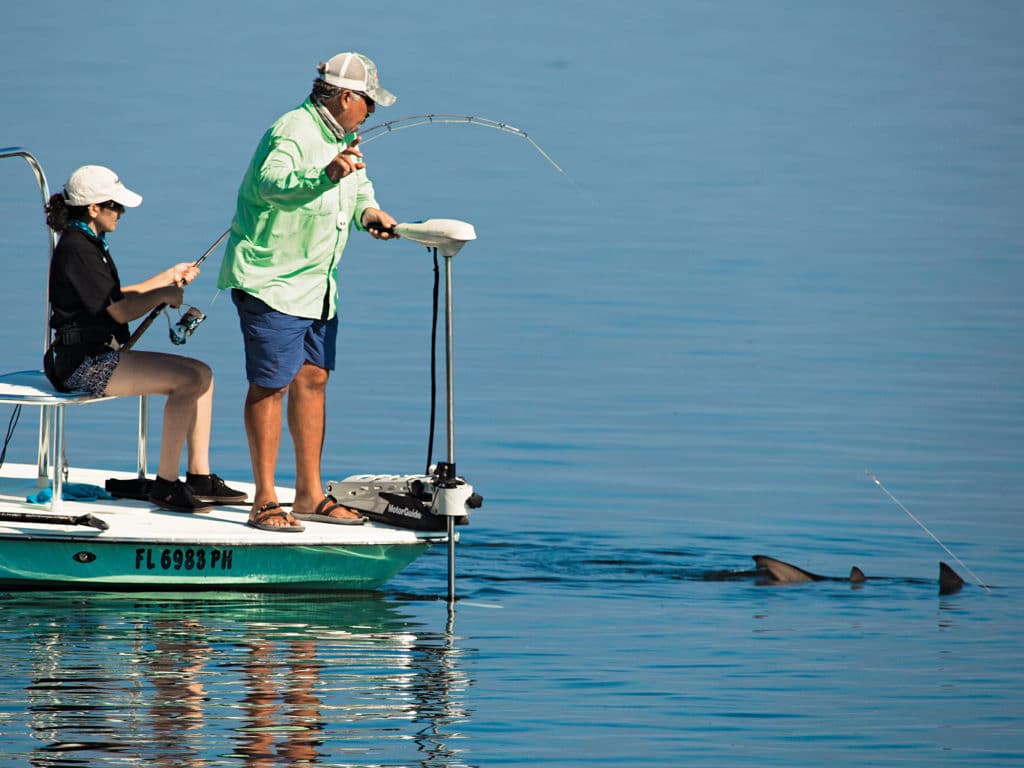
Excellent visibility and calm water offered an aquarium view of a dozen sharks from 4 to 8 feet, enabling us to choose which ones to let eat the bait. We whiffed on three before we got the first solid hookup. Though fired up, these sharks moved deliberately and required a long runoff before they took the bait deeply enough for the circle hook to grab. The mantra became “let him swim to Key West before you set the hook.”
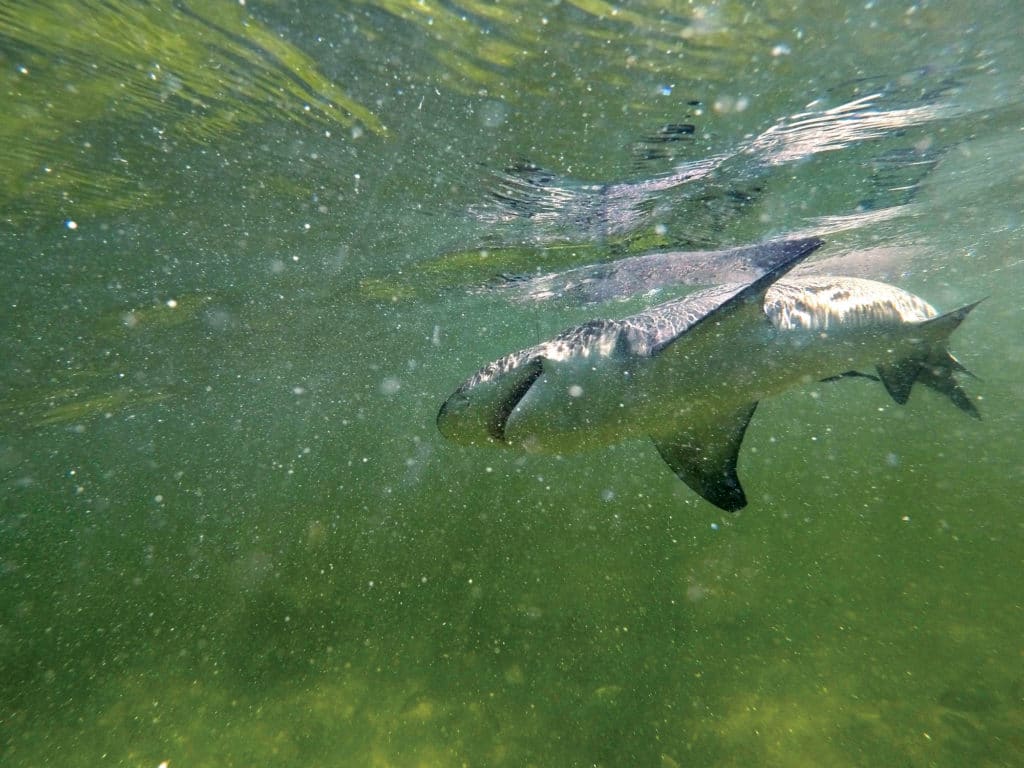
The sharks kept coming, so we called in our second boat. Easing alongside, it staked out to share our chum line, and the crew rotated through and each angler caught sharks. With the sun dropping over the Gulf toward Campeche, we decided to pack it up. The redfish would just have to wait for another visit.









